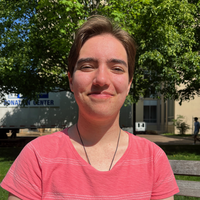Conceptualizing A-spec Community: Affinities, Well-being, and Advocacy within Asexual- and Aromantic-Spectrum Groups
The population of asexual- and aromantic-spectrum (a-spec) people is small and dispersed, but the Internet has helped connect people in recent decades. Little work has been done evaluating in-person a-spec communities. Further consideration of affinity, connection, and belonging is important for these spaces, given that the current moment presents an opportunity to research a more clearly formed community than a decade ago. A-spec people are often alienated by narratives of sex and romance as essential and healthy, but discourse within community spaces can present alternatives. Some literature has evaluated different forms of advocacy among asexual-identified people, but the landscape of advocacy in these spaces presently is not clear.
For my honors thesis in Communication, I conducted three focus groups and one individual interview across three established, location-based, a-spec affinity groups. Eighteen total participants were asked to fill out a short, optional demographic survey and answer questions about community practices within their affinity group and at large, narratives of well-being, and a-spec advocacy. Participants were compensated thirty dollars for the two-hour sessions. Transcripts of the discussions were open coded using a critical thematic analysis.
Within the a-spec groups, people largely felt that they could be their full, relaxed selves. Many participants were looking for spaces where their identity and experiences were understood, and friends who ‘get’ it. All groups identified a general a-spec culture, but only two of three sites described an affinity with a “community” at large. When they did, this was largely through a sense of camaraderie with other a-spec people encountered in public spaces. There was a strong preference for in-person a-spec affinity spaces over online platforms, especially for building deep friendships and establishing community legitimacy. Participants’ a-spec identities helped them rethink mainstream narratives of well-being, and they identified knowing yourself, recognizing their autonomy with and within relationships, and maintaining networks of support as key to living well. Participants noticed an increase in a-spec visibility in recent years, though the public understanding is still limited. They proposed existing genuinely as individuals, active visibility and resource sharing at the group level, and representation of actual a-spec experience through the media as necessary approaches to a-spec advocacy today.
This research helps fill a gap in work on a-spec communities to date. It can be hard to find spaces like these where people feel welcome and understood, so participants’ reflections on connection, belonging, and affinity can inform future community-building practices. Sharing a-spec narratives of well-being counters negative assumptions and can help other individuals consider their lives outside of what may be expected of them. With an understanding that visibility is still so important for a-spec people, news and other media workers can include more real a-spec experiences in their content.
Thank you to my advisors, Dr. Jessa Lingel and Dr. Kimberly Woolf, both of the Annenberg School. This work was funded in part by a College Alumni Society Undergraduate Research Grant through the Center for Undergraduate Research and Fellowships. It was also supported with funding from the Annenberg School for Communication.

Comments